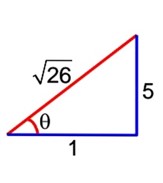Physics Motion in Plane
Get insights from 107 questions on Physics Motion in Plane, answered by students, alumni, and experts. You may also ask and answer any question you like about Physics Motion in Plane
Follow Ask QuestionQuestions
Discussions
Active Users
Followers
New answer posted
3 months agoContributor-Level 10
A particle moving with uniform speed in a circular path maintains varying velocity and varying acceleration. It is because direction of both velocity as well as acceleration will change continuously.
New answer posted
3 months agoContributor-Level 10
y = x5 (1 – x) = x tan θ
tan = 5, R = 1
y – component of initial velocity
= u sin θ
=
= 5 m/s
New answer posted
3 months agoContributor-Level 10
For climbing downward
50 g – T = 50a
T = 500 – 50 * 4
= 300 N < 350 N
for climbing upwards
T – 50 g = 50 a
T – 500 = 50 * 5
T = 750 N > 350 N
New answer posted
3 months agoContributor-Level 10
let the angle between is , so according to question, we can write
New answer posted
3 months agoNew answer posted
3 months agoContributor-Level 10
Range R =
For 42° and 48° Range will be same
maximum q
So maximum height will be for 48°
Taking an Exam? Selecting a College?
Get authentic answers from experts, students and alumni that you won't find anywhere else
Sign Up on ShikshaOn Shiksha, get access to
- 65k Colleges
- 1.2k Exams
- 679k Reviews
- 1800k Answers

